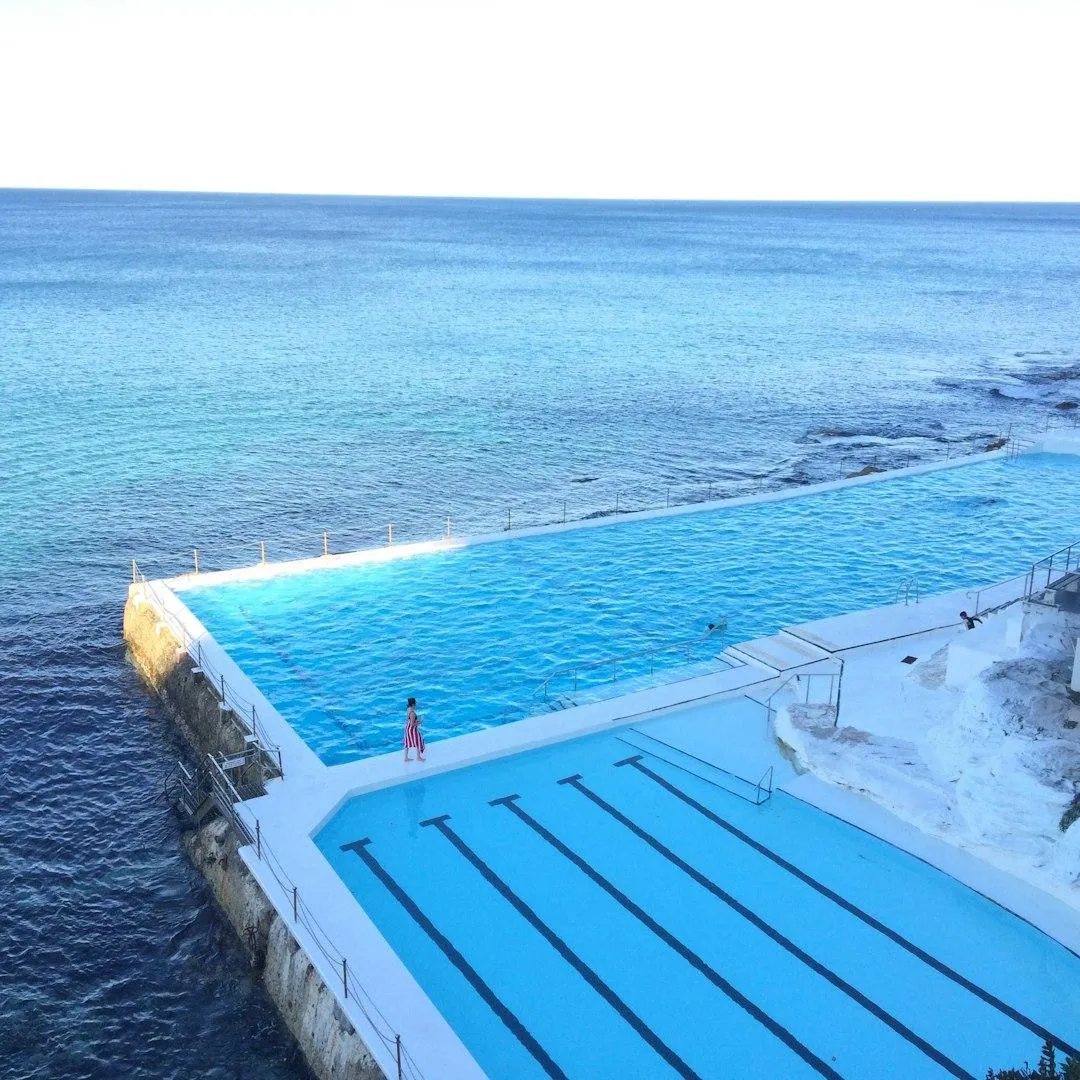Fiberglass vs Concrete Pools: Dive into the Right Choice for Your Backyard!

Hey there, future pool owner! Are you dreaming of lazy summer days floating in your very own backyard oasis? Well, you've got a big decision to make: fiberglass vs concrete pools.
Don't worry, we're here to help you navigate these waters and find the perfect pool for your needs. By the time you finish reading, you'll be a pool pro, ready to make a splash with your choice!
Why This Choice Matters
Choosing between fiberglass vs concrete pools is like picking between chocolate and vanilla ice cream - they're both great, but one might suit your taste better!
The right choice can mean years of happy swimming and less time on maintenance. So, let's dive in and explore the world of pool options!
What's the Difference Between Fiberglass Pools and Concrete?
Before we jump into the deep end, let's get clear on what the difference between fiberglass pools and concrete really is:
1. Fiberglass Pools
Pre-made in a factory
Dropped into your yard in one piece
Smooth, non-porous surface
Come in pre-designed shapes and sizes
2. Concrete Pools
Built from scratch in your yard
Can be any shape or size you want
Rough, porous surface
Customizable features and designs
Now, let's break down the pros and cons of each!
Fiberglass Pools: Smooth Sailing
Pros:
Quick installation (about 2-3 weeks)
Low maintenance
Smooth surface (gentle on feet and swimsuits)
Algae resistant
Durable and long-lasting
Compatible with salt water systems
Cons:
Limited size and shape options
Higher upfront cost
Might look less custom
Difficult to transport in some areas
Can't be as deep as concrete pools
Concrete Pools: Endless Possibilities
Pros:
Completely customizable
Can be any size or shape
Durable and long-lasting
Adds more value to your home
Can include unique features like beach entries
No size limitations
Cons:
Long installation time (3-6 months)
Higher maintenance needs
Rough surface (can be hard on feet and suits)
More chemicals needed to prevent algae
Higher lifetime costs
Can develop cracks over time
Cost Comparison: Your Wallet's Best Friend
When it comes to fiberglass vs concrete pool cost, there's a lot to consider. Let's break it down:
1. Initial Installation
Fiberglass: $45,000 - $85,000
Concrete: $50,000 - $100,000+
2. Ongoing Costs (over 10 years)
Fiberglass: About $3,750
Concrete: About $27,400
3. Resurfacing
Fiberglass: Rarely needed
Concrete: Every 10-15 years, costing $10,000 - $20,000
4. Energy Costs
Fiberglass: Lower due to smooth surface and efficient cleaning
Concrete: Higher due to greater pump and filtration needs
So, which is better, fiberglass or concrete pool when it comes to your wallet? In the long run, fiberglass often wins the race! But remember, the initial fiberglass vs concrete pool price might be higher for fiberglass.
Making Your Choice: 5 Steps to Pool Perfection
Now that you've seen 10 of the best swimming pool designs for home, how do you choose? Here's a simple guide:
Measure Your Space How much room do you have? Concrete might be better for odd-shaped yards.
Set Your Budget Think about both upfront and long-term costs. Don't forget about ongoing maintenance!
Consider Your Timeline Want to swim this summer? Fiberglass is quicker! Concrete pools take longer but offer more customization.
Think About Maintenance How much time do you want to spend on pool care? Fiberglass is lower maintenance overall.
Imagine Your Dream Design Want a unique shape or special features? Concrete offers more options. Happy with standard shapes? Fiberglass might be perfect.
Fun in the Sun: Activities for Both Pool Types
No matter which pool type you choose, you can enjoy:
Swimming laps for fitness
Playing water volleyball or basketball
Relaxing on pool floats with a good book
Hosting pool parties for friends and family
Teaching kids to swim in a safe environment
Just remember, diving is safer in concrete pools due to their customizable depth!
Keeping Your Pool Pristine
For both pool types:
Skim the surface daily to remove debris
Check chemical levels weekly and adjust as needed
Run the filter as recommended by the manufacturer
Vacuum the pool bottom regularly
For concrete pools, add these steps: 5. Brush the walls weekly to prevent algae growth 6. Acid wash every 3-5 years to remove stains and buildup
For fiberglass pools: 5. Wipe the waterline periodically to prevent buildup 6. Avoid using abrasive cleaning tools that could damage the gel coat
Climate Considerations
Your local climate can affect your pool choice:
Hot Climates: Both pool types work well, but concrete may require more cooling systems.
Cold Climates: Fiberglass pools flex better with ground movement from freezing and thawing.
Coastal Areas: Fiberglass resists salt damage better than concrete.
Installation Process
Understanding the installation process can help you make your decision:
Fiberglass Pool Installation:
Excavate the hole
Level the hole and add sand
Place the pre-made pool shell
Install plumbing and backfill
Install coping and decking
Fill with water and start-up
Concrete Pool Installation:
Excavate the hole
Install plumbing and steel reinforcement
Spray gunite or pour concrete
Allow concrete to cure (about 28 days)
Apply finish (plaster, aggregate, or tile)
Install coping and decking
Fill with water and start-up
The Final Splash: Making Your Decision
So, fiberglass vs concrete pools - which is the winner? Well, that depends on you! Here's a quick recap:
Choose fiberglass if you want:
Quick installation
Low maintenance
Lower long-term costs
A smooth, comfortable surface
Go with concrete if you want:
Complete customization
Any size or shape
The classic pool look
Ability to add unique features
Remember, both fiberglass vs concrete pools have their pros and cons. The best choice is the one that fits your lifestyle, budget, and backyard dreams.
Whether you go for the smooth, easy-care fiberglass or the endlessly customizable concrete, you're in for years of splashy fun. So grab your sunscreen, pick your perfect pool, and get ready for endless summer memories!
Happy swimming, pool pals!

© 2025 | All Rights Reserved | Privacy Policy
